
|
|
|
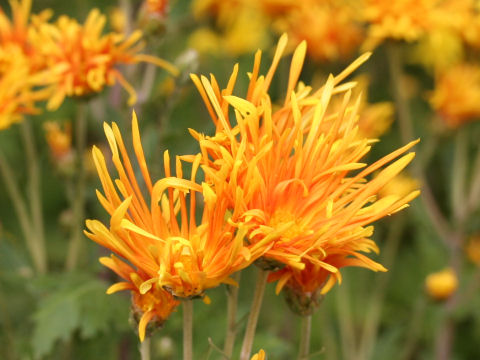 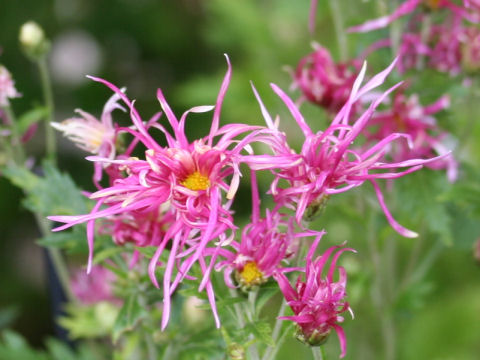 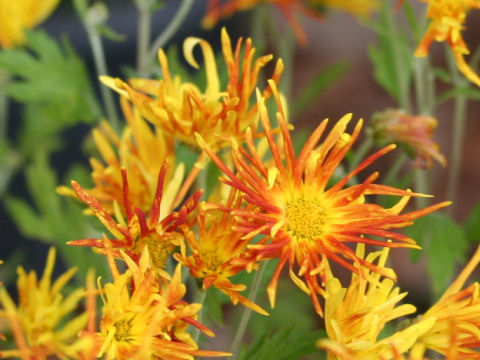 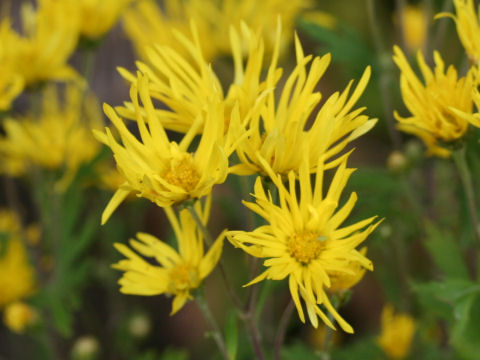 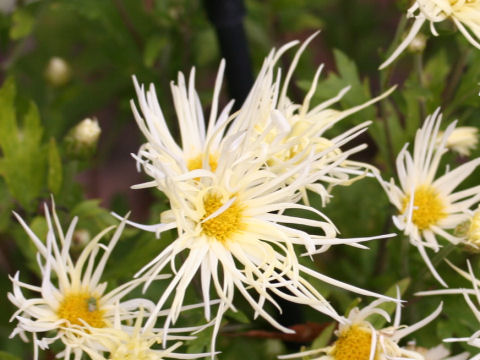 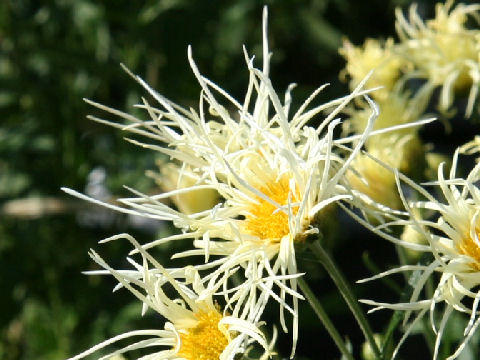 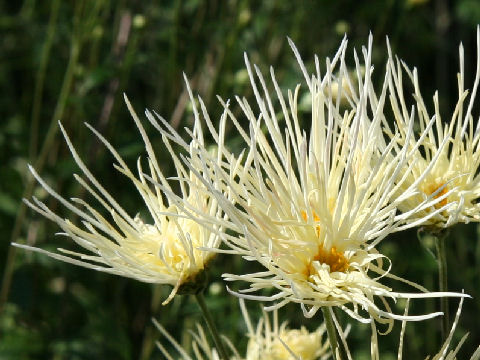 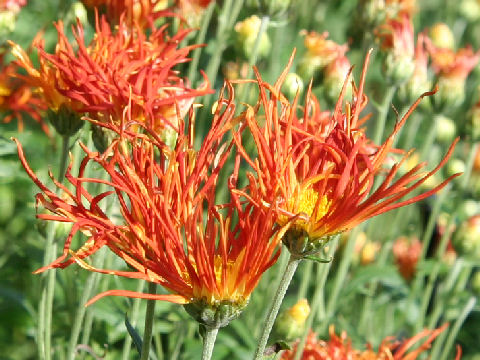 |
|
|
|
わが国の京都府右京区嵯峨で育成された鑑賞菊の一品種群で、江戸末期ごろに品種が成立したと考えられます。直径9〜18センチの中菊で、ふつうの「きく」よりも遅く、11月ごろに咲きます。糸のように細い管弁が特徴です。嵯峨野にある大覚寺では、王朝風の七五三作りの伝統を今に伝えています。 写真上の品種は、「右近の橘」、 中1は、「定雄紫紅」、 中2は、「嵯峨の錦」、 中3は、「嵯峨の月」、 中4は、「大路の朝霧」、 中5は、「嵯峨の風車」、 中6は、「嵯峨の庵」、 そして下は、「小倉娘」。 |
|
|
キク科キク属の多年草で、学名は Chrysanthemum grandiflorum cv. Saga。英名はありません。 |
|
|
The "Saga-giku" (Chrysanthemum grandiflorum cv. Saga) belongs to Asteraceae (the Aster family). It is a perennial herb that is a group of ornamental chrysanthemums bred in Saga, Ukyo-ku, Kyoto Prefecture, Japan, and is thought to have been established around the end of the Edo period (1603-1868). It is a medium-sized chrysanthemum with a diameter of 9 to 18 cm, and blooms later than the common chrysanthemums, around November. It is characterized by its thin, thread-like tubular petals. At Daikakuji Temple in Sagano, the tradition of making Shichi-Go-San in the style of the imperial court is still carried on today. |
|
|
[上・中1〜4] 京都府精華町「花空間けいはんな」にて、2005年11月14日撮影。 [中5〜6・下] 同上にて、2006年10月30日撮影。 |

|
|
Shu Suehiro |